Clos Roche Blanche Touraine Gamay Noir 2003

Product Details
Your Rating
Somm Note
Winemaker Notes
Touraine, a Loire Valley appellation, designates a large viticultural area around the city of Tours. The vineyards of Clos Roche Blanche were planted on the Touraine hills bordering the Cher river by the Roussel family at the end of the 19th century and have remained in the family since. Catherine Roussel took over this 28-hectare estate in 1975 from her father, and was later joined by Didier Barrouillet, who tends the vineyards and makes the wine. Both are enthusiastic proponents of non-interventionist winemaking.
Their soil is poor, mainly clay with flint over a limestone subsoil. The varietals grown are Cabernet (Sauvignon and Franc), Gamay, Côt (or Auxerrois, the grape of Cahors) and Sauvignon Blanc. Roussel and Barrouillet keep yields low by maintaining old vines, using organic fertilizers in moderation and growing grass between and plowing under the rows.
They converted the vineyards to organic farming and, with the 1995 vintage, received the official "organic agriculture" accreditation. The vines are treated with copper and sulfur solutions, and plant decoctions (a mixture of nettles and other herbs) used in biodynamic viticulture.
The grapes are hand-harvested and the Sauvignon Blanc is macerated for 48 hours. The must is handled by gravity at all stages. The wine then ages on its lees, is bottled by gravity by hand without filtration to avoid mechanical manipulation that would unsettle it. Instead of using sulfur at bottling, the bottles are blanketed with CO2. Their Sauvignon Blanc, of incredible purity and fruit, is available at amazingly low prices. All the red wines have true varietal character, and the depth associated with low yields and optimum ripeness.
Neither Catherine or Didier has studied oenology or viticulture. They both learned their trade in the vineyards and the cellar, searching for methods and techniques to make wines of exceptional character in an appellation of modest reputation.
Other Vintages
2004-
Wine &
Spirits

The soil is poor, mainly clay with flint over a limestone subsoil. The varietals grown are Gamay, Cot (or Auxerrois, the grape of Cahors) and Sauvignon Blanc. Roussel and Barouillet keep yields low by maintaining old vines, using organic fertilizers in moderation and growing grass between and plowing under the rows.
They converted the vineyards to organic farming over the past three years and the 1995 vintage bears the official "organic agriculture" accreditation. The vines are treated with copper and sulfur solutions, and plant decoctions (a mix of nettles and other herbs) used in bio-dynamic viticulture.
Neither Catherine nor Dider has studied oenology or viticulture. They both learned their trade in the vineyards and the cellar, searching for methods and techniques to make wines of exceptional character in an appellation of modest reputation.

With hundreds of red grape varieties to choose from, winemakers have the freedom to create a virtually endless assortment of blended red wines. In many European regions, strict laws are in place determining the set of varieties that may be used, but in the New World, experimentation is permitted and encouraged resulting in a wide variety of red wine styles. Blending can be utilized to enhance balance or create complexity, lending different layers of flavors and aromas. For example, a red wine blend variety that creates a fruity and full-bodied wine would do well combined with one that is naturally high in acidity and tannins. Sometimes small amounts of a particular variety are added to boost color or aromatics. Blending can take place before or after fermentation, with the latter, more popular option giving more control to the winemaker over the final qualities of the wine.
How to Serve Red Wine
A common piece of advice is to serve red wine at “room temperature,” but this suggestion is imprecise. After all, room temperature in January is likely to be quite different than in August, even considering the possible effect of central heating and air conditioning systems. The proper temperature to aim for is 55° F to 60° F for lighter-bodied reds and 60° F to 65° F for fuller-bodied wines.
How Long Does Red Wine Last?
Once opened and re-corked, a bottle stored in a cool, dark environment (like your fridge) will stay fresh and nicely drinkable for a day or two. There are products available that can extend that period by a couple of days. As for unopened bottles, optimal storage means keeping them on their sides in a moderately humid environment at about 57° F. Red wines stored in this manner will stay good – and possibly improve – for anywhere from one year to multiple decades. Assessing how long to hold on to a bottle is a complicated science. If you are planning long-term storage of your reds, seek the advice of a wine professional.

Stretching east along the steep banks of the Loire River, Touraine is a major part of the Middle Loire. Soil variations of clay, sand, tuffeau and gravel throughout its subregions support both white and red varieties. Chinon and Bourgueil remain the source of Loire’s finest Cabernet Franc; various styles of the most outstanding Chenin blanc come from Vouvray and Montlouis.